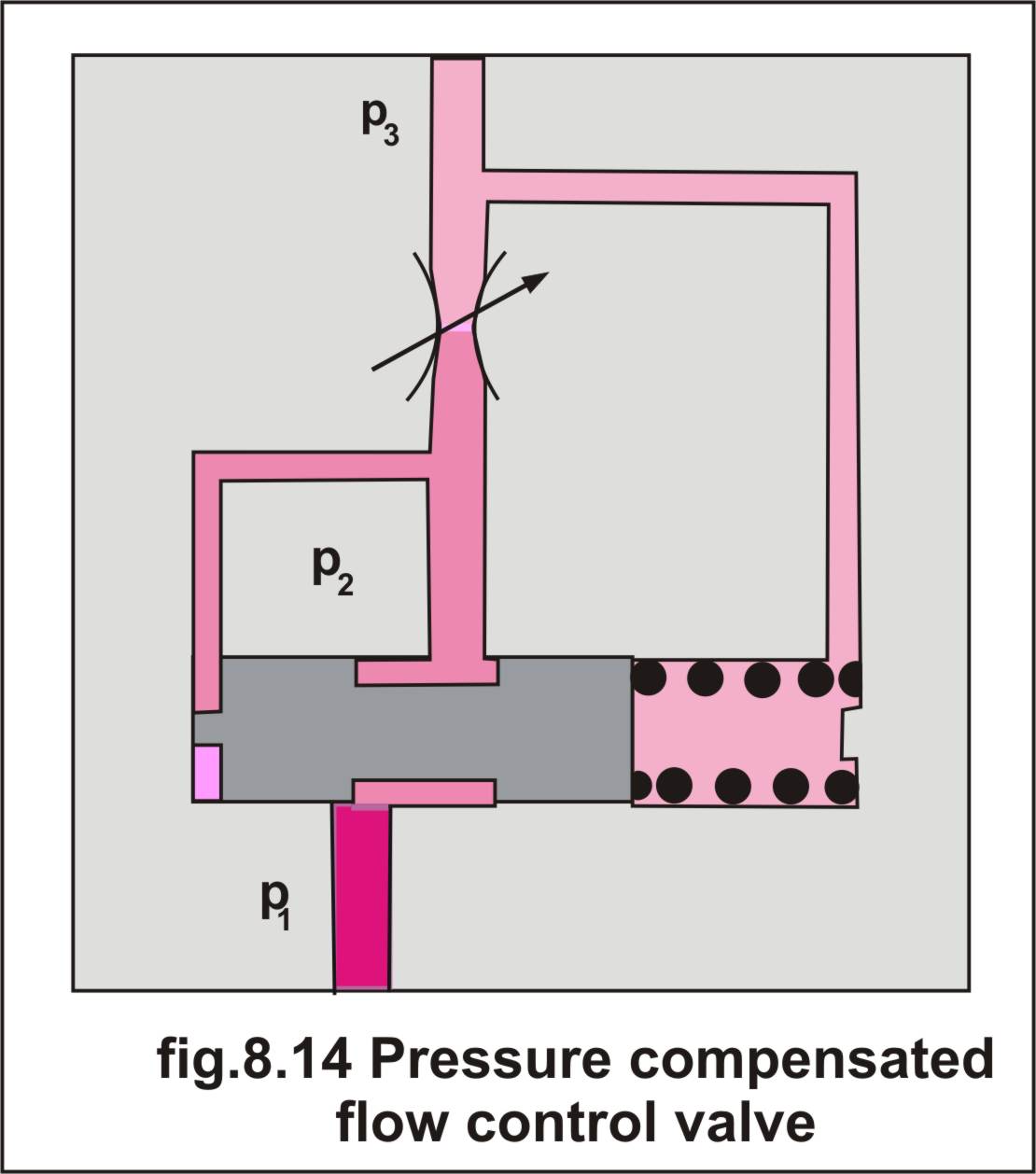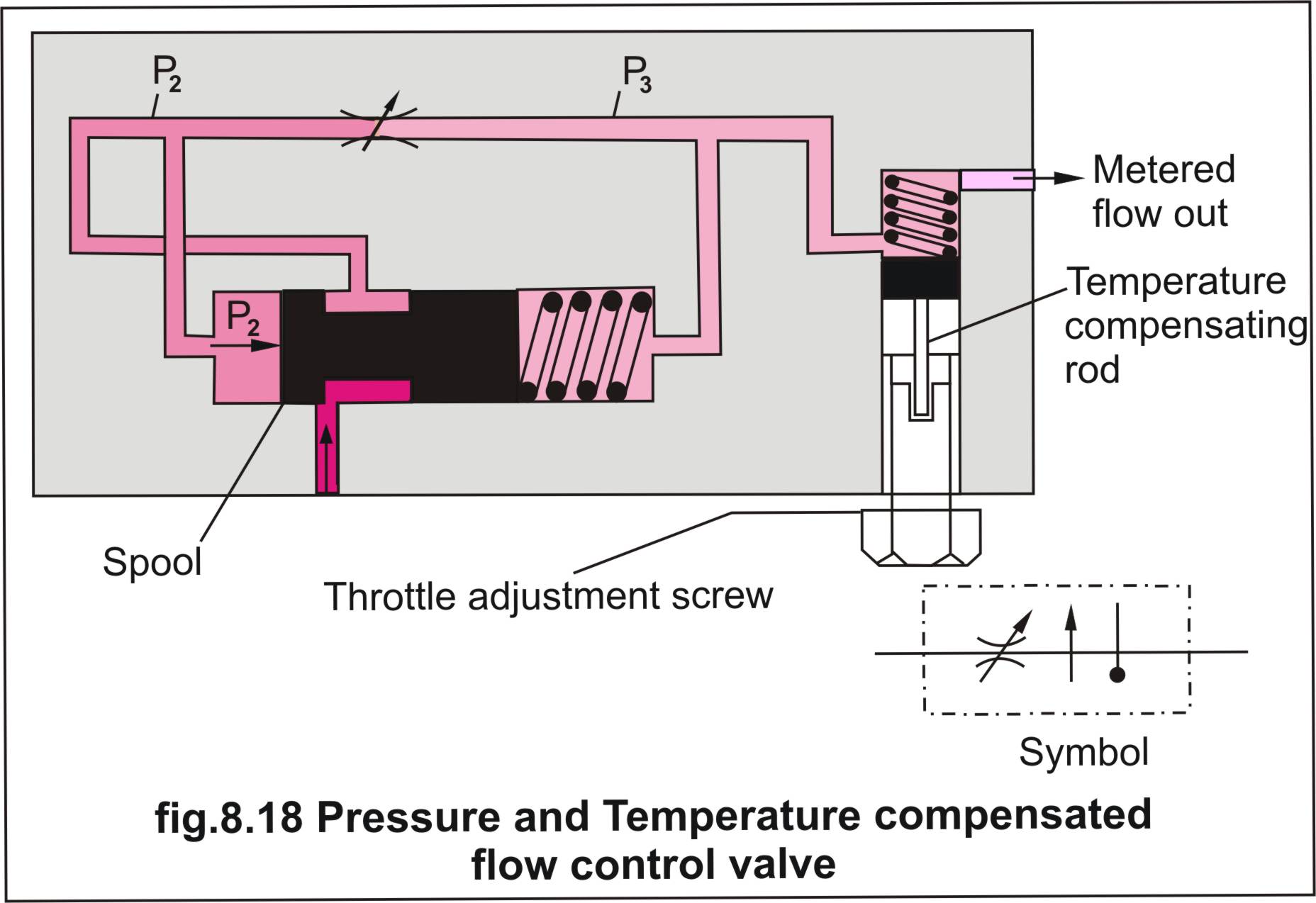Q.1. State the function of flow control valve? Draw non compensated flow control valves.
Ans: Flow control valves are used to regulate the flow of fluid in a hydraulic system. The speed at which the actuator (cylinder or motor) moves is decided by the flow. Where as the force exerted by actuator is determined by pressure. A variety of flow control valves are used.
Flow is controlled either by throttling or diverting it. Throttling involves reducing orifice (opening) size until all of the flow cannot pass through the orifice; where as diverting involves routing part of the flow around the circuit so that the actuator receives only the portion needed to perform its task

Q.2. Explain with sketch pressure compensated flow control valve.
If constant flow is demanded by the consumer, (independent of pressure (load) variations) in such situations pressure compensated flow control valves are used.
Principle of operation :
Pressure compensated flow controls maintain nearly constant flow despite variations in circuit pressure. Like the non-compensated units they incorporate a metering orifice. Flow pressure drop across this orifice is used to shift a balanced spool against a control spring. This spool movement is used to maintain constant pressure drop across the orifice, which in turn produces a constant flow.

It is seen that flow through a restriction changes paraboloidal with pressure drop across metering orifice. Hence to keep flow through an orifice constant one has to
keep the pressure drop (P2-P3) across the orifice constant. This is achieved in the pressure compensated flow control valve by spool movement.
Change in pressure is given by
Thus from above equation it is obvious that, the pressure drop across orifice can only changed by changing spring tension. Now in case of pressure variation i.e. change in pressure P3, the spool moves to cause the corresponding changes in P2 and thus maintaining the difference (P2-P3) a constant and hence the flow remains constant. Thus the valve delivers the flow at constant rate irrespective of pressure changes
Q.3. Explain with sketch pressure-temperature compensated flow control valve.
The pressure compensated flow control valve maintains nearly constant flow despite variations in the circuit pressure. But there is an another parameter which affects the flow, that is temperature .The effect of temperature is that the viscosity of oil decreases (causing oil to be thinner) this leads to
increased velocity and hence increased flow.

onstructional details of a combined pressure and temperature compensated flow control valve is shown in fig 8.18. The pressure compensation part of this valve is same as earlier described pressure compensator. The flow from pressure compensator passes through temperature compensator, which consists of a spool held against a special alloy temperature-compensating rod by a spring. A throttle adjustment screw is provided to adjust the spool setting. As the temperature of fluid increases resulting in decreases in viscosity of oil. This result in increases in oil velocity and hence increases the flow. As the compensator rod gets heat due to temperature rise it expands proportional to temperature rise, causing the spool to move against the spring, closing the throttle. Thus it reduces the cross sectional area of the flow in the proportionate of velocity rise (i.e. viscosity reduction).
- Log in to post comments
